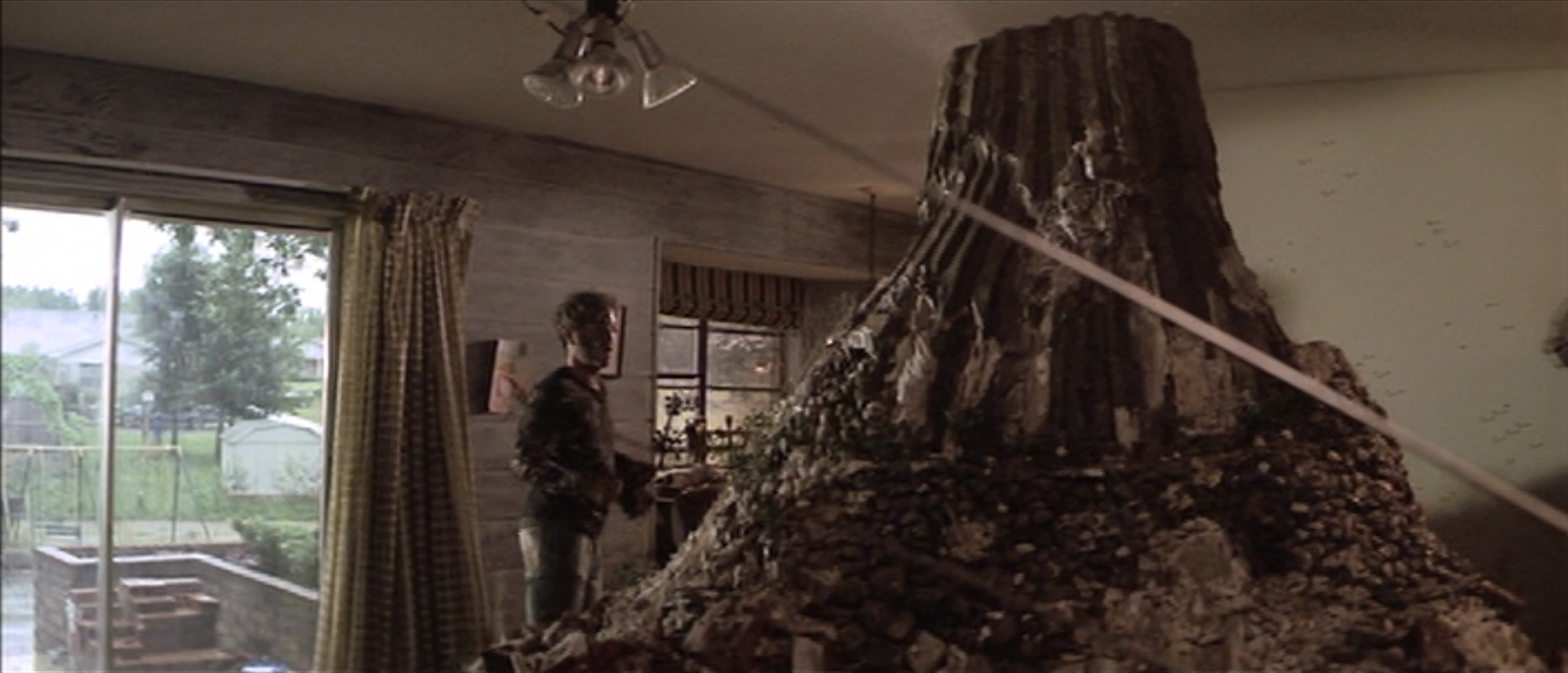Movie Review: Close Encounters of the Third Kind (1977) directed by Steven Spielberg
We are not alone in the universe. There are beings from beyond the stars, who have visited Earth from time to time. Sometimes there have even been “close encounters”, sightings and nebulous evidence. Now, perhaps, it is time for a true meeting in person, a close encounter of the third kind. At least that’s what a United Nations research team lead by Claude Lacombe (François Truffaut) and his faithful interpreter David Laughlin (Bob Balaban) are hoping. They are pursuing clues in remote Sonoran Mexico, India and the Gobi Desert.

Meanwhile in Indiana, a particularly spectacular set of UFO sightings is underway. Among those most strongly affected are toddler Barry Guiler (Cary Guffey) and electrician Roy Neary (Richard Dreyfuss). There’s a great deal of excitement about the weird lights in the sky, despite the best efforts of the U.S. government and military to downplay them. This reaches a more panic level of public concern when Barry goes missing and his widowed mother Jillian Guiler (Melinda Dillon) thinks he’s been abducted by aliens.
The task force realizes that the flying saucers are sending them both musical cues and a set of coordinates. It appears the aliens want to set up a meeting at Devil’s Tower in Wyoming.
A number of civilians who’ve witnessed the UFOs begin being obsessed with images of a peculiar geological formation. Roy is particularly hard-hit, losing his job and exasperating his wife Ronnie Neary (Terri Garr) with his antics until she finally takes the children and leaves him. A look at a news broadcast about a train derailment and nerve gas spill (oh doesn’t that hit a nerve in 2023!) alerts him to Devil’s Tower.
The “nerve gas” is a cover story concocted by the U.S. military to evacuate all civilians from the contact area, to protect them in case the aliens are hostile, and to protect the aliens from potential panicked civilians otherwise. Only Lacombe seems to realize that the civilians who are heading towards Devil’s Tower instead of away from it have been “invited” and he’s overruled.
Despite this, Roy and Jillian manage to make it to the landing zone. But what will they find there?
Flying saucer stories had been a staple of the sci-fi movie genre since the 1950s, with either hostile aliens coming to attack Earth and/or steal our women, or kid-friendly aliens that just wanted to meet Santa or something. This movie takes a different approach, as the saucer aliens appear to have benign intentions as far as they can be grasped, but their actions are largely unexplained and seem to have little consideration for the humans who are affected. Close Encounters also goes away from the usual mid-1970s anti-government paranoia science fiction films of the time had. The military is staging a cover-up, they are inconveniencing and lying to civilians, but their intentions are good, and meant to protect Americans, not control them. The military goes out of its way not to kill anyone just because it would be convenient.
Good: All the special effects scenes. This is top of the line photo, painting and model work for the time period and looks great even a half century on.
The research team is fun to follow, and the relatively rare acting appearance of Truffaut is used well. The technology of the time is different, a military officer demonstrates how easy it was to “fake” a UFO photo, and for all the computers in the room, there’s no mapping programs, so a globe has to be rolled in from elsewhere. It’s something of a nostalgia piece now.
I especially like that until very near the end, anytime Jillian is the viewpoint character, it’s shot like a horror movie, which is the genre she thinks she’s in.
Less good: Anything with Roy’s family life. He’s an obsessive hobbyist even before he’s brainzapped by the aliens, unable to follow simple household rules, and having to be reminded of promises he’s made to interact with the rest of the family, who are kind of obnoxious. Scenes with the Neary family grate, and it’s no surprise when Ronnie bails.
The product placement is obvious and painful.
Overall: It’s a good movie, and iconic (John Williams music!) But it’s never been a top priority for me to see it again, and having watched it, I remember why. All the good bits stayed fresh in my mind, while the in-between moments vanished, so the movie I remembered was even better than the original.

